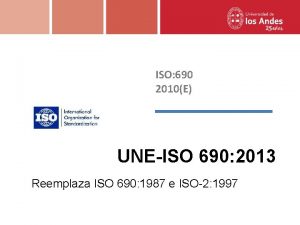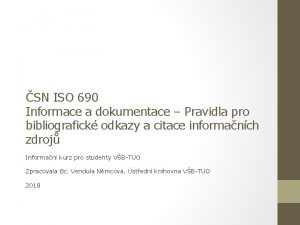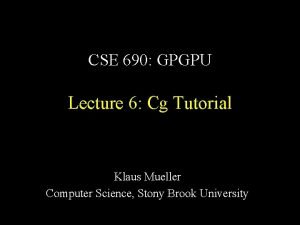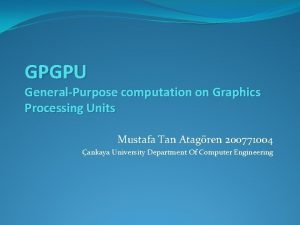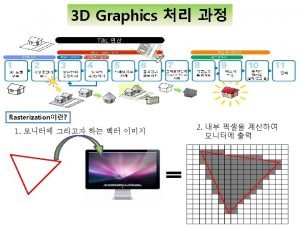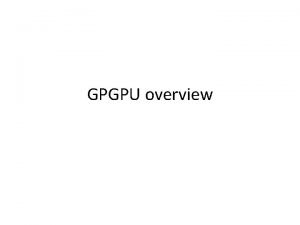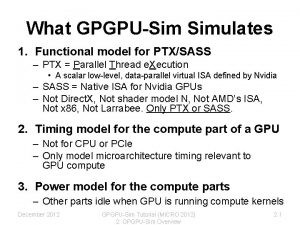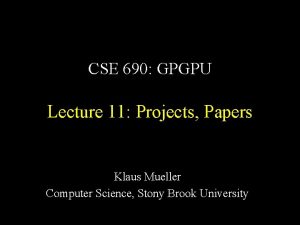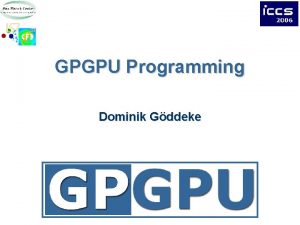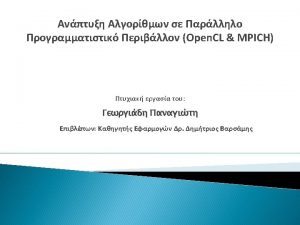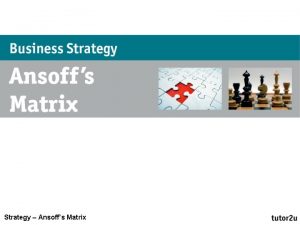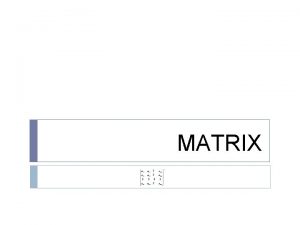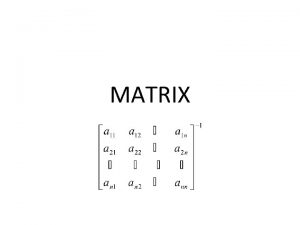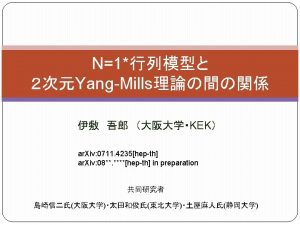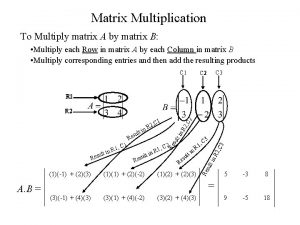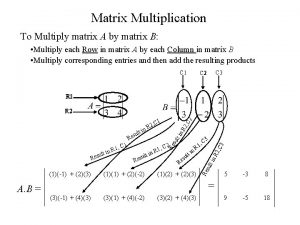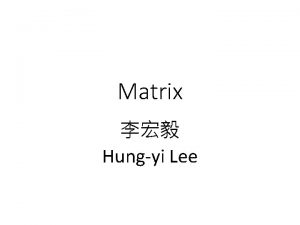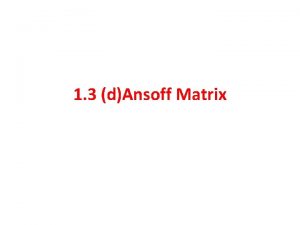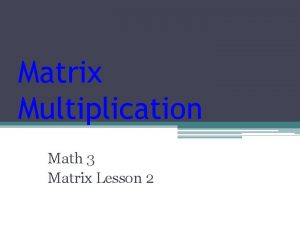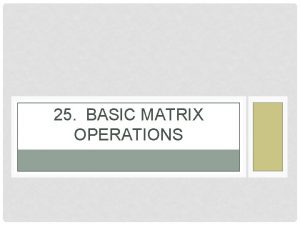CSE 690 GPGPU Lecture 7 Matrix Multiplications Klaus



















- Slides: 19

CSE 690: GPGPU Lecture 7: Matrix Multiplications Klaus Mueller Computer Science, Stony Brook University

Basic Concept • Triple loop

GPU Algorithms • First algorithm: ù ù ù render a rectangle of size Nx. N represent the matrices as Nx. N textures each (i, j) is then a fragment each fragment program is a loop or an unrolled loop -> may get too long must pull in the same data many times -> poor data reuse, needs bandwidth makes no use of 4 -way RGBA parallelism -> wastes speedup

GPU Algorithms • Better algorithm: ù ù use RGBA channels, pack a 2 x 2 submatrix use swizzling to facilitate data reuse swizzling improves fragment code length by factor 2 may need multiple passes for larger matrices

GPU Algorithms • Using multi-texturing ù requires l passes

GPU Algorithms • Can use RGBA parallelism as well ù ù ù each texel represents a 2 x 2 submatrix use swizzling as usual needs l/2 passes

GPU Algorithms • Instead of a 2 x 2 submatrix, pack 4 x 1 column vectors ù makes 4 -times reuse of texels read from B, but uses texels from A only once

GPU Algorithms • Instead of a 2 x 2 submatrix, pack 4 x 1 column vectors ù ù 6 fetches are needed for 4 mad’s (mult-add’s) -> 1. 5 times more than before but less rows and columns are accessed per pass > improves cache hit frequency

GPU Algorithms • Originally only compute one product per shader ù ù ù practically can unroll the loop 3 -6 times (compute 3 -6 products) maximal fragment program length is the limit reduces the number of passes required

Reality Check • Would like to compare CPU and GPU efficiencies for GPGPU tasks • The task of matrix multiplication is insightful here ù ù ù features much data reuse graphics programs are generally more stream-like and have less data reuse this may lead to some limitations

Platforms • Pentium 4 3 Ghz CPU, 512 KB L 2 cache 12 GFLOPS peak compute • 44. 1 GB/sec cache BW • Using sgemm routine from ATLAS package • • NVIDIA Ge. Force 5900 Ultra • Ge. Force 6800 Ultra • • ATI Radeon 9800 XT • Radeon X 800 XT PE •

Performance

Bandwidth vs. Peak FLOPS

Analysis • Currently: ù ù ù GPUs can fetch 16 floats and perform 16 4 component mad’s per clock our app fetches 8 floats to perform one 4 component mad -> not enough computations need more math ops per float fetched (> 8)

Analysis • Pentium processors have large L 1 caches to boost memory bandwidth (bw) ù ù bw / compute ratio better main reason for only small performance gain achieved with GPUs

Analysis • Pentium processors have large L 1 caches to boost memory bandwidth (bw) ù ù ù bw / compute ratio better main reason for only small performance gain achieved with GPUs for matrix multiplications

Analysis • Expectations ù ù make sure that there is enough arithmetic per data item fetched lots of data resuse in the algorithm / task will make the CPU look better streaming data OK -> they don’t “suffer” from reuse matrix multiplication is an excellent reality-check example

Analysis • What do GPUs need: ù ù ù bigger caches to enable larger blocks currently there are enough registers to store a 6 x 6 submatrix but currently shaders can only produce a small number of outputs -> limits the amount of blocking Provide full-floating point accumulator registers Widen path between texture and register files

References ù ù ù E. Larsen and D. Mc. Allister, “Fast matrix multiplies using graphics hardware, ” Supercomputing 2001. J. Hall, N. Carr and J. Hart, “Cache and bandwidth aware matrix multiplication on the GPU, ” Tech Report UIUCDCS-R-2003 -2328 -1 K. Fatahalian, J. Sugerman, and P. Hanrahan, “Understanding the efficiency of GPU algorithms for matrix-matrix multiplication, ” Graphics Hardware Workshop 2004.
 Reguli de citare
Reguli de citare Bravok
Bravok Iso 690:2013
Iso 690:2013 Unesio
Unesio Zasady sporządzania bibliografii
Zasady sporządzania bibliografii Mt 690
Mt 690 Iso 690 harvardský styl
Iso 690 harvardský styl Iso 690-2
Iso 690-2 Iso 690:2013
Iso 690:2013 690-380
690-380 Ejemplos de conclusiones de trabajos
Ejemplos de conclusiones de trabajos Iso 690 harvardský styl
Iso 690 harvardský styl Gpgpu matlab
Gpgpu matlab Gpgpu tutorial
Gpgpu tutorial Unicompiler
Unicompiler Gpgpu
Gpgpu What is gpgpu
What is gpgpu Deploying deep learning models with docker and kubernetes
Deploying deep learning models with docker and kubernetes Gpgpu-sim tutorial
Gpgpu-sim tutorial Matlab parallel computing gpu
Matlab parallel computing gpu



